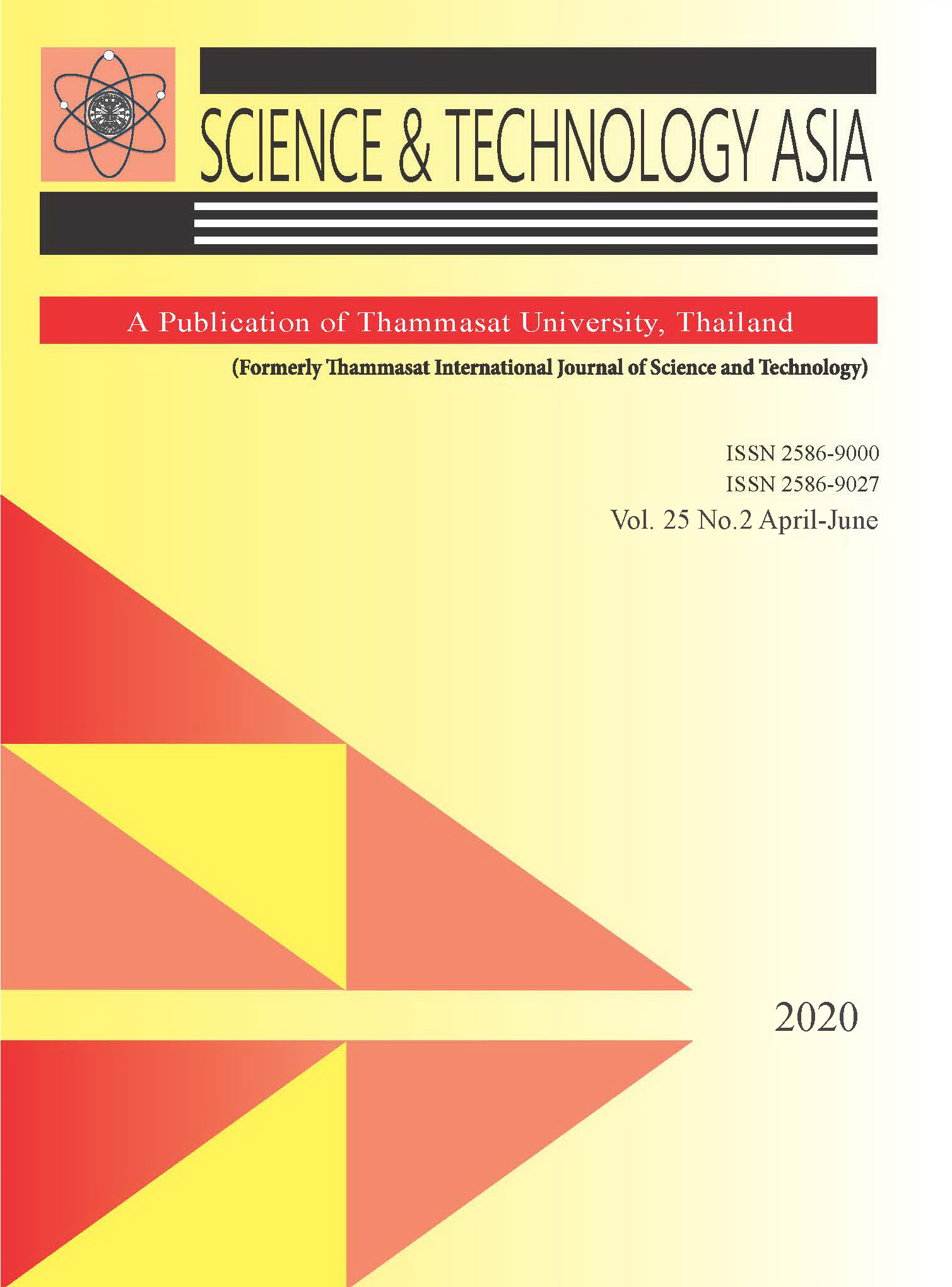Role of Trehalose-6-Phosphate Phosphatase Encoding Gene in Cell Wall Homeostasis of Talaromyces marneffei
Main Article Content
Abstract
Fungal cell walls are complex and incredibly dynamic during growth of the dimorphic fungus that grows in both forms of filament and yeast such as Talaromyces marneffei (formerly Penicillium marneffei). The role of the trehalose biosynthesis pathway on cell wall regulation has never been studied in this particular human pathogen. Moreover, a critical reason makes the trehalose biosynthesis pathway under the investigation due to the absence of genes involving in this pathway in humans. The roles of orlA gene encoding for trehalose-6- phosphate phosphatase on the morphological phenotypes, conidiation, and the involvement of cell wall regulation were determined by the characterization of the generated mutant strain lacking an orlA gene. The results showed that lack of orlA has an impact on morphology including the conidiation defect on media for fungal cultivation including the minimal media containing ammonium sulfate (ANM+AS), brain heart infusion agar, malt extract agar, and potato dextrose agar at 25oC. Interestingly, a nitrogen source such as gamma Aminobutyric acid (GABA) dramatically restores the conidiation of the orlA mutant strain. Finally, loss of orlA significantly inhibits growth on the media containing cell wall perturbing agents (50 μg/ml Calcofluor white and 0.5 mg/ml Congo red) similar to the results found in other human pathogenic fungi which are not dimorphic fungi. In conclusion, the results show the importance of orlA gene and trehalose pathway in the cell wall homeostasis and conidiation of dimorphic fungus which confirms previous suggestions that this catalytic enzyme is a promising target for antifungal drug development.


